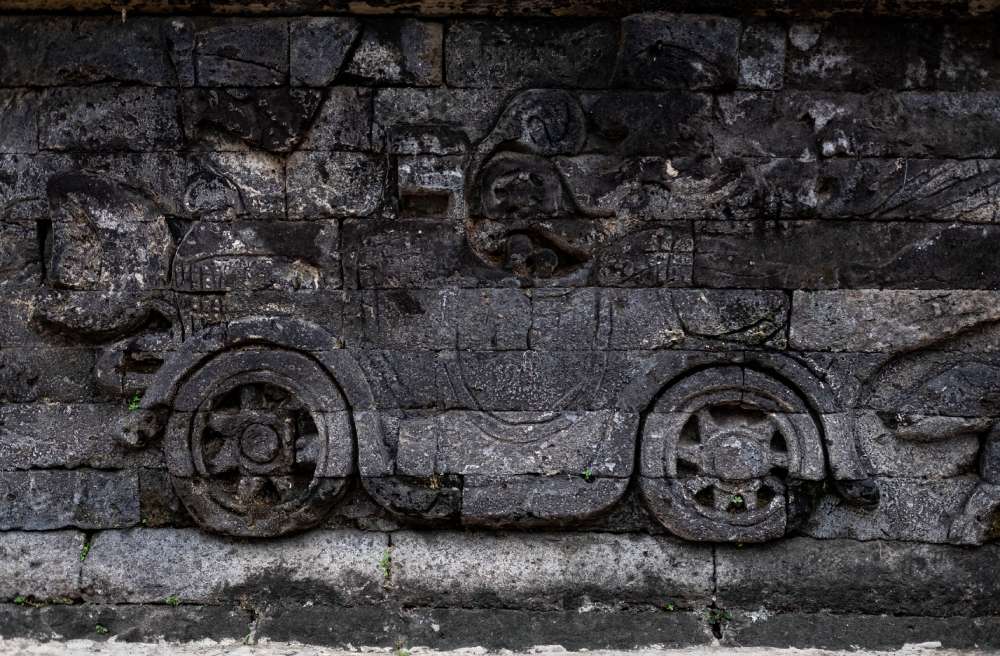Ubud Story Walks is a new experience that launched at the end of April 2022, specialising in a unique, guided tour around Ubud focused on discovering different histories of the town on foot. The NOW! Bali team was fortunate enough to experience their debut tour, “Ubud: Past to Present”, a crash-course on how Ubud came to be!
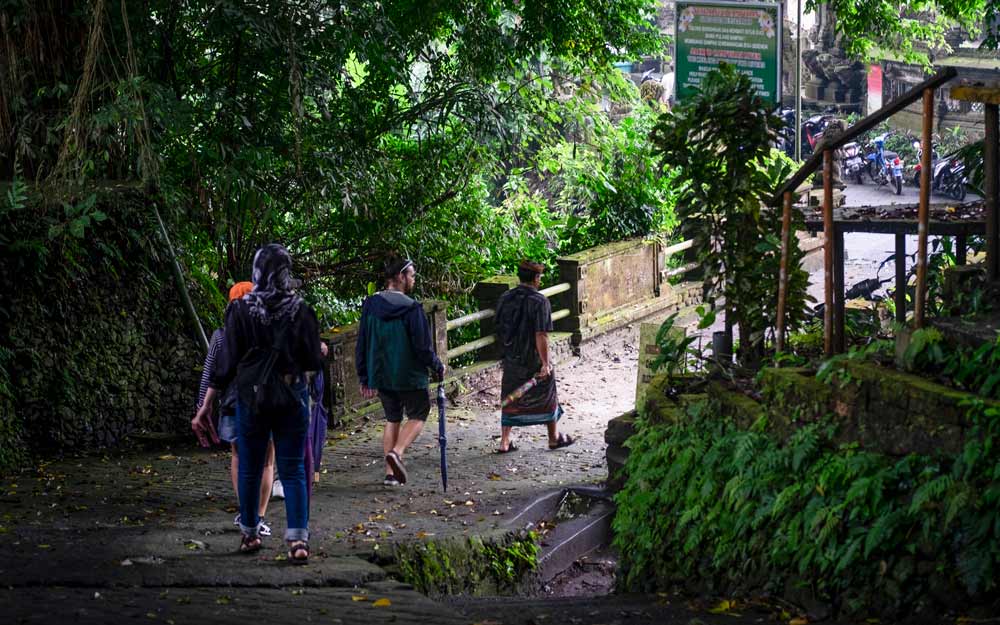
Arriving early on a Saturday morning, we were welcomed by our wonderful hosts, Kelly Kluvers, the Founder of Ubud Story Walks, and Windia (or “Indi”), our local tour guide for the day. At the meeting point, a charming café and library by the name of Little Talks, Kelly shared a brief introduction of herself and also how Ubud Story Walks came to be.
Originally from the United States of America, Kelly previously worked as a Study Abroad Coordinator and tour guide in Beijing, organising and leading semester-long university programmes for foreign students studying in China. In 2017, she moved to Jakarta, Indonesia, and for the last two years she has called Bali her home. However, after her work was disrupted by the pandemic, Kelly decided to utilise her skills as a program coordinator in a new way.
Inspired by the island’s centuries worth of culture and history, Kelly understood that Bali’s complex history might not be something that easily digested by visitors. She saw especially just intriguing and rich Ubud’s own historical heritage was, and felt that it was somehow underrepresented. So, she set off to make a change: the idea for Ubud Story Walks was conceived as a way to tell the fascinating stories of Ubud through walking tours and to honour the Balinese people and their culture.
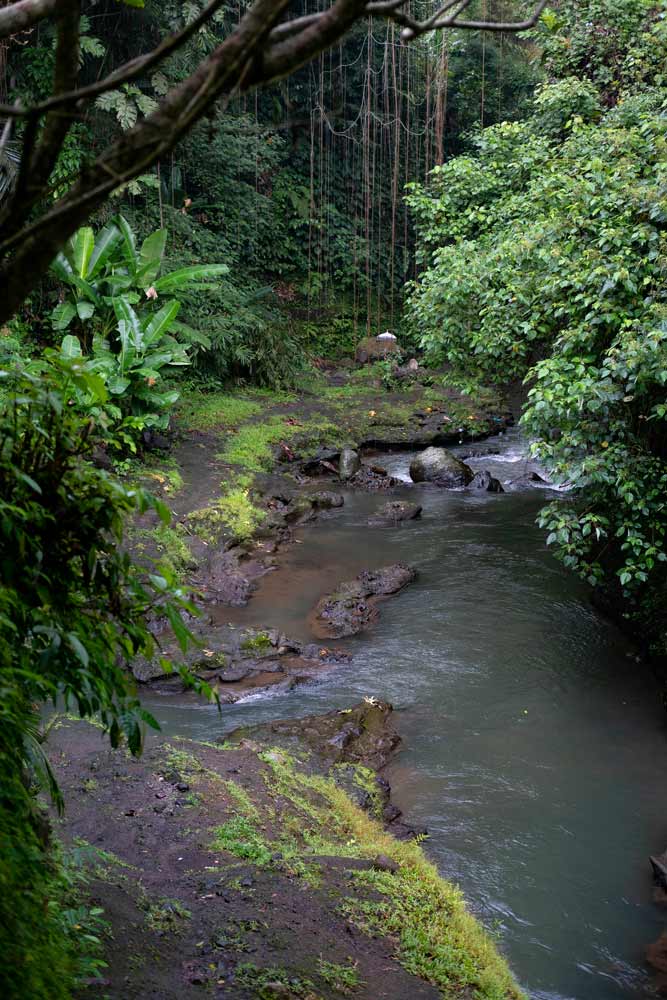
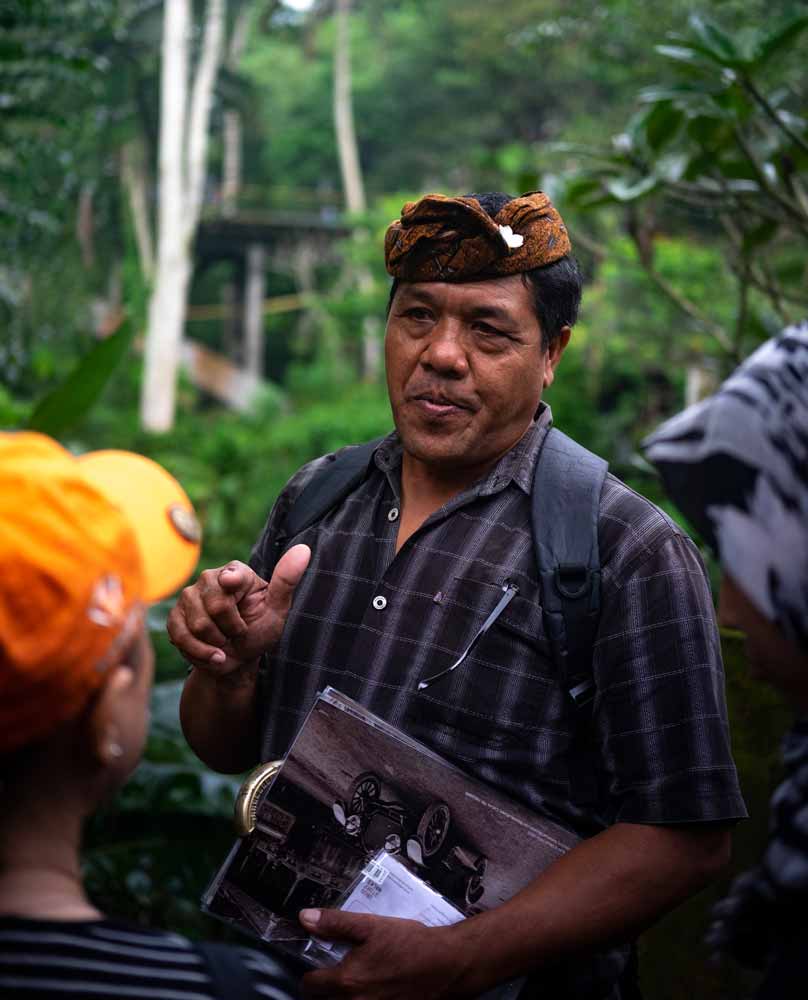
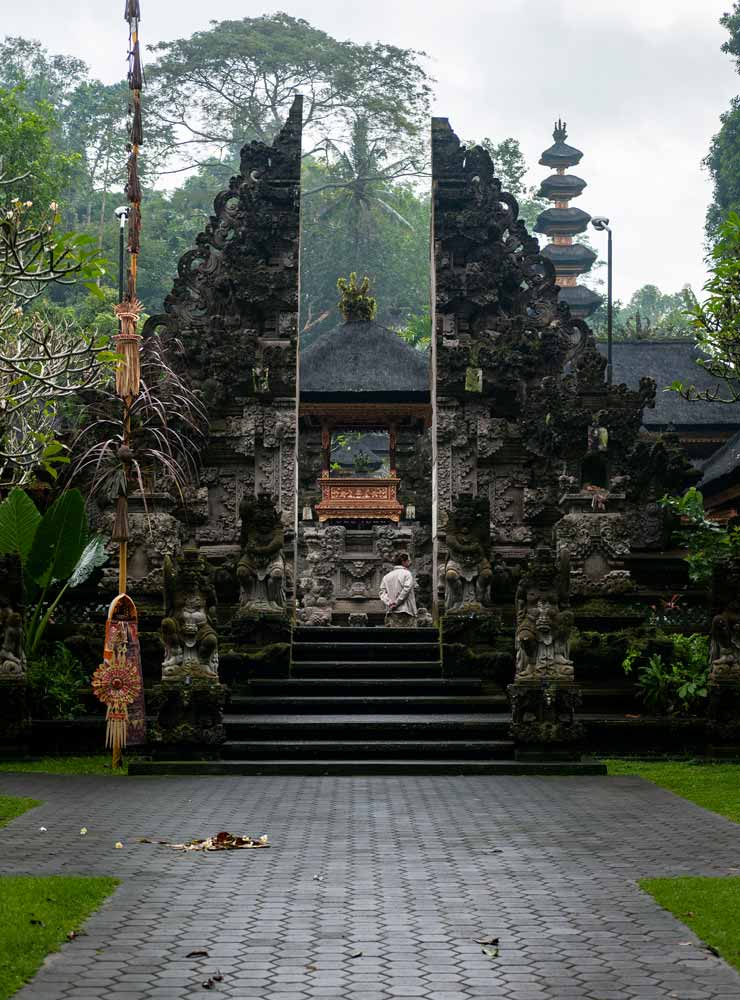
As we started our journey led by Indi to the first historical site it began to drizzle, but the rain really brings out the mystical charm and atmosphere of Ubud, complementing the story of Ubud’s origins.
The tour starts at Pura Gunung Lebah, one of Ubud’s main historical landmarks: an 8th-century temple enclosed by the scenic jungle surroundings, standing above the Campuhan River. Though visitors aren’t allowed to enter past the temple gates, you can see the beautiful structure of ancient Balinese architecture. Here, Indi shared with us the history of the temple, built by Rsi Markandaya, a holy priest from India who is regarded as one of the most important religious figures in Balinese Hinduism.
Then, down to the banks of the river, where shrine was built with a statue of the holy priest on the site of his most beloved place of meditation, the point of confluence of two rivers, to the left Wos Kiwa and to the right Wos Tengen, which converge into a single stream. How many times have we driven or walked across the Campuhan Bridge without noting the significance of the stunning views before us?
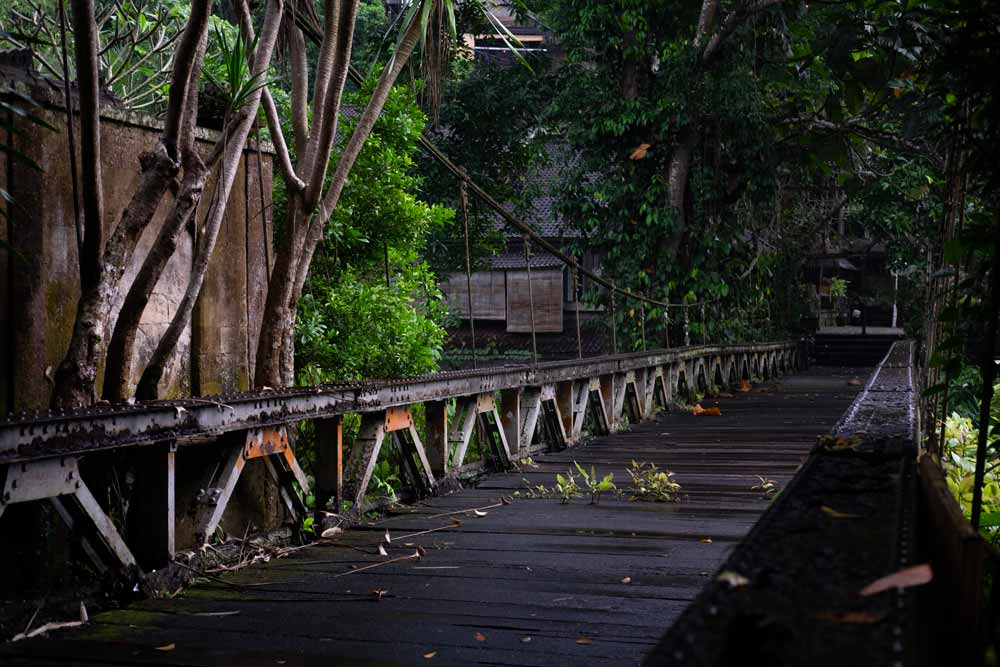
Next, we made our way back up to the bridge, where we stood in-front of one of Ubud’s long-standing restaurants, Murni’s Warung, a real institution. Here Indi shared the influence of the Dutch Colonial era on the town, referencing the old Campuhan Bridge (found beside the current bridge), a remnant of their time in Bali. Due to its aged and worn-down state, flower pots have been placed on either end of the bridge to halt visitors from walking across the frail bridge for safety concerns.
We continued uphill towards the centre of town, taking in Ubud’s surroundings as we strolled onwards, Indi pointing out interesting anecdotes here and there. Then we made it to our third destination, Museum Puri Lukisan. We gathered at the museum’s café where Kelly re-joined us for a short break with coffee and Balinese jaja, or sweet market snacks, as little pick-me-up. Continuing the discussion of the Dutch, she handed out some old black and white photographs of the time, as well as real artefacts (coins and currency). A tangible history indeed!
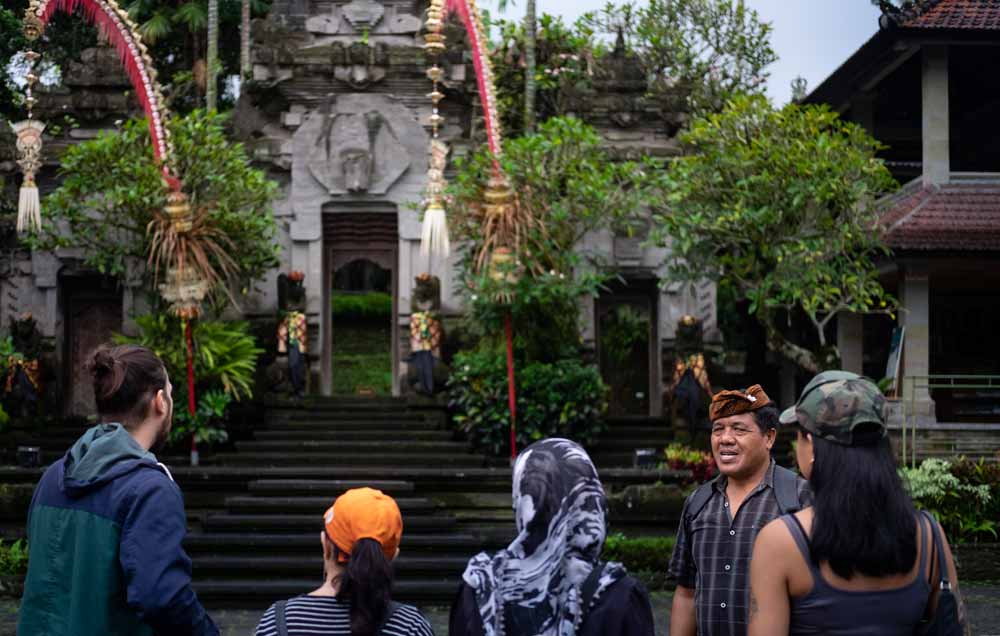
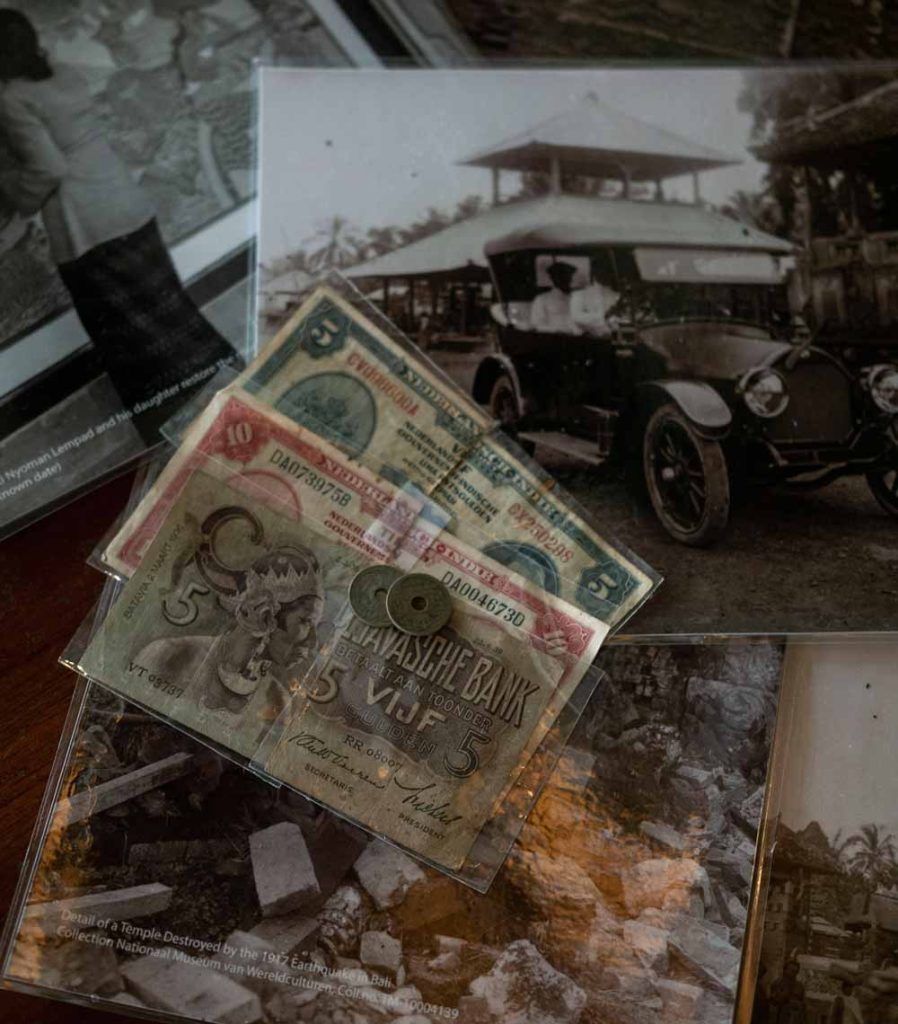
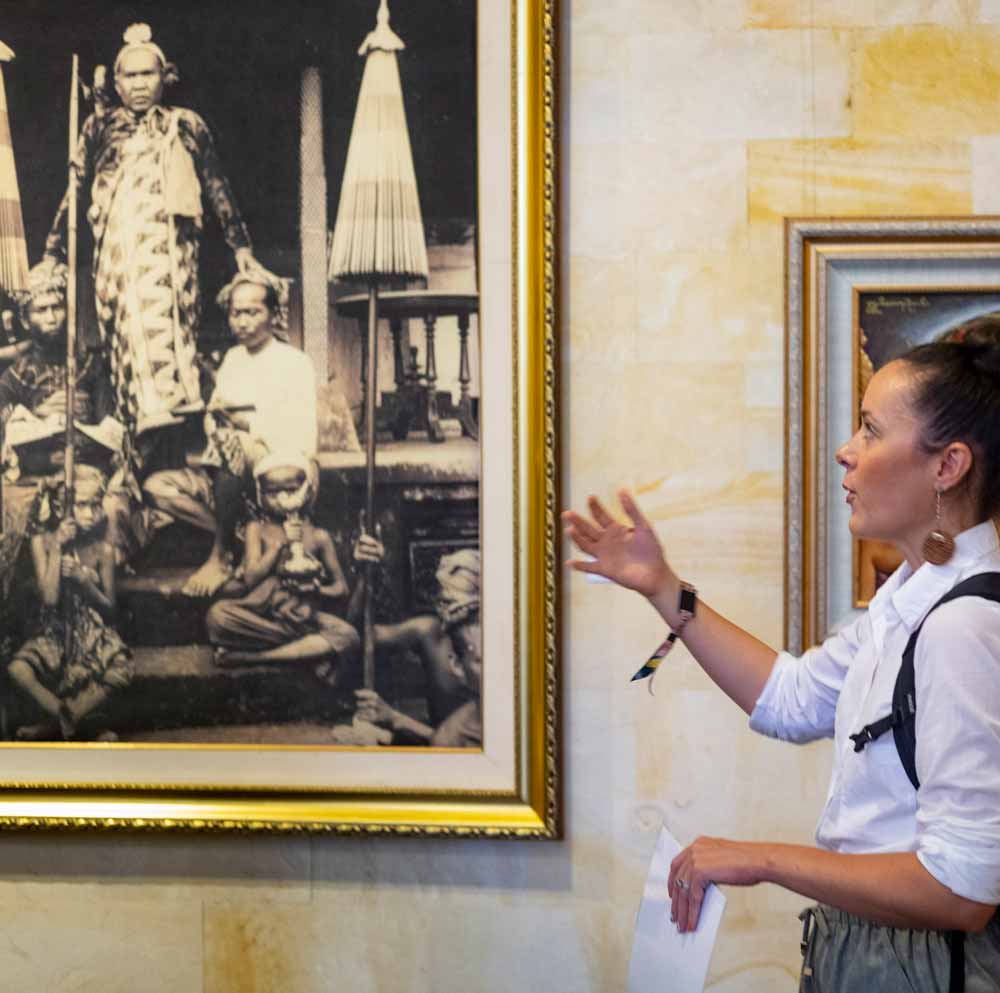
Kelly shared with us her extensive knowledge of the museum’s history; established in 1956, Museum Puri Lukisan houses an eclectic collection of Balinese cultural arts, ranging from paintings to traditional and contemporary wood carvings. As the oldest art museum on the island, the initial idea to build a museum for the arts was conceived in 1936 by the Pita Maha, an art association founded by the former King of Ubud, Tjokorde Gede Agung Sukawati; his brother, Tjokorde Gede Raka Sukawati; Balinese artist, I Gusti Nyoman Lempad; German artist, Walter Spies; and Dutch artist, Rudolph Bonnet. Kelly and Indi expanded on the museum’s significance, and what role each of these characters had in the development of Ubud, especially the role of art and culture in its reputation. Some of the museum’s own displays and exhibitions were used creatively to depict the history they shared.
The next destination was Pura Taman Saraswati. This unique temple features a path at the centre with various sculptures along the pathway, enclosed by a vast pond adorned with beautiful pink lotus flowers and a water garden. This photogenic spot is a favourite for just that reason: photos! But Indi explained the significance of the temple, which was designed by I Gusti Nyoman Lempad – a Balinese ‘undagi’, or architect and sculptor – in 1952, as a place of worship for the Hindu Goddess of Knowledge, Dewi Saraswati. He explained the philosophy of the design, an homage to the fantastic mythology of Bali and also Hinduism.
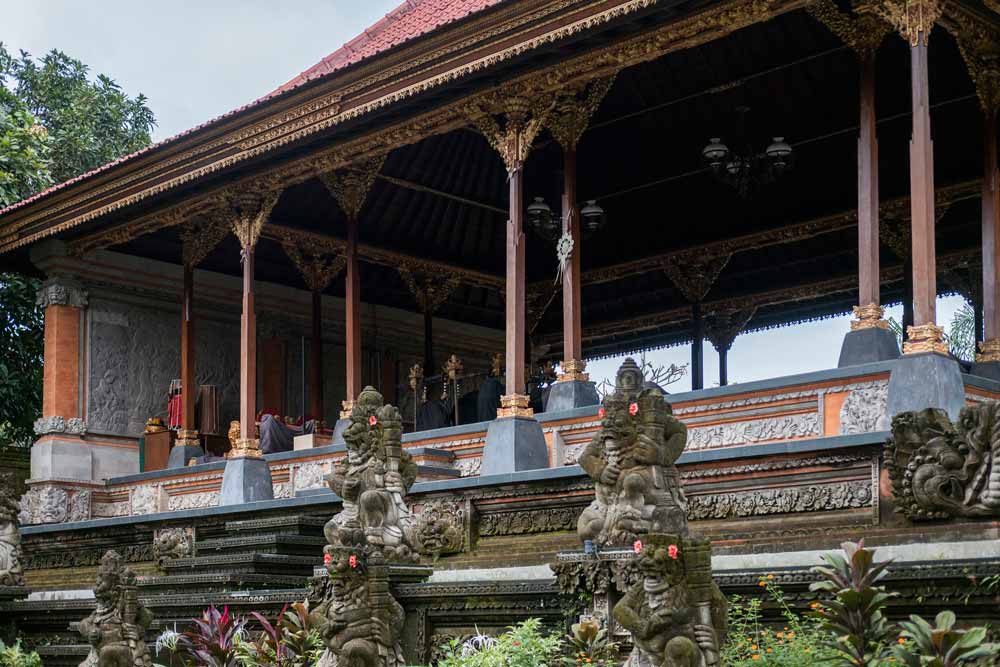
Next up was Puri Saren or the Ubud Palace, the residence of the Ubud royal family. As always, the palace was busy with tourists, all snapping their photos. Indi once again shared some great tidbits of insider information and history; even those who know the history of Ubud will learn a little something!
Finally, we headed to one of Ubud’s lesser-visited sites: the Lempad House, the humble abode of the aforementioned undagi, I Gusti Nyoman Lempad. Although the Lempad House is mere minutes away from the Ubud Palace, many visitors overlook or simply miss the Lempad House, which is open to visitors. It features the eclectic collection of Bali’s great artist, some unfinished sculptures and artwork of which Kelly and Indi had some stories to share!
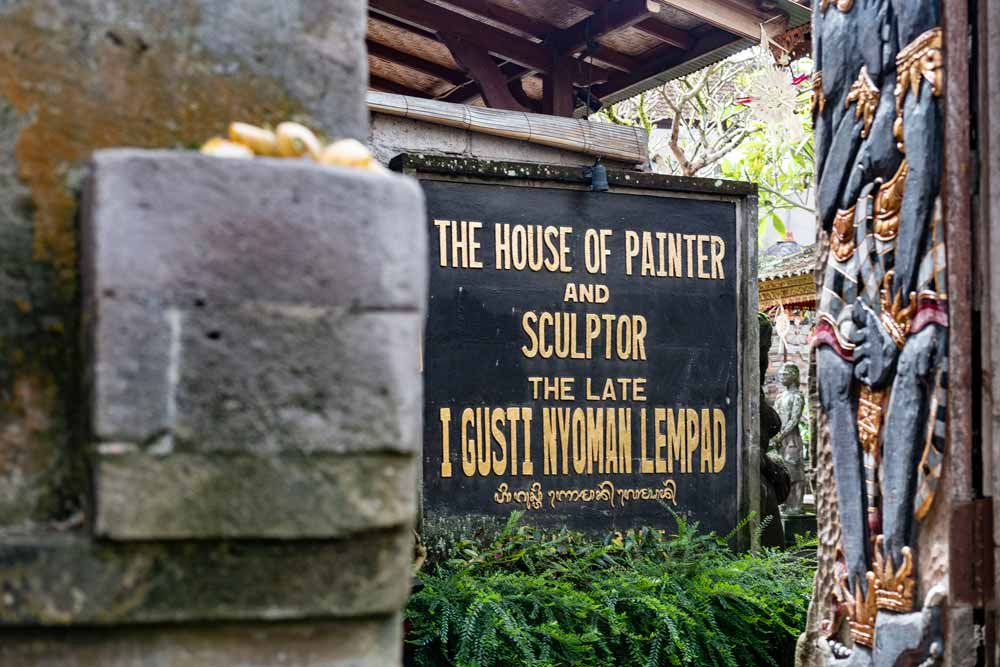
Ubud Story Walks is a fantastic concept that helps promote slow tourism, where visitors can actually take a minute to learn and appreciate the island’s unique culture and history, instead of visiting a famous place just to take pictures for their social media without having any context of its background. Clearly, Kelly and team had to do some heavy research to piece the history together, something they now happily share with their guests on this delightful – and meaningful – stroll through Ubud.
The cost of the “Ubud: Past to Present” tour is priced at IDR 350,000 per person, which includes all guide fees and entrance tickets for a maximum group of 6 people. The tour normally starts at 8.30am and lasts approximately 2,5 hours. The tour is recommended for adults and children above 14 years old.
It should be noted that this tour recommends participants wear comfortable footwear and attire suitable for long-distance walking, preferably anti-slip footwear as several paths can be quite slippery. An umbrella might come in handy at some point as the weather in Ubud can prove to be quite unpredictable, with the possibility of rain.
For bookings and information head to: www.ubudstorywalks.com or follow them on Instagram at @ubudstorywalks.


